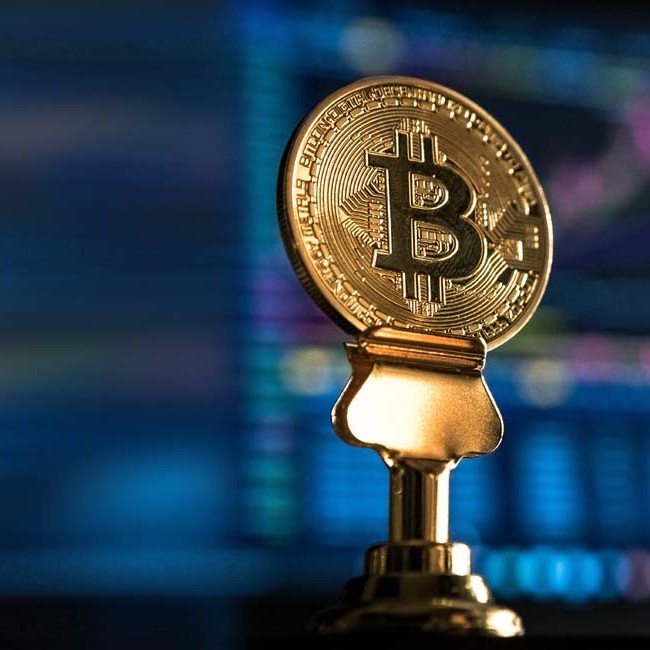
Bitcoin, cryptocurrencies and blockchain. Short guide to the future of transactions
9 February 2018“Bitcoin is the combination of a bubble, a Ponzi scheme and an environmental disaster”, affirmed the General Director of the Bank for International Settlements, Agustin Carstens, at a conference in Frankfurt in which was present also Jens Weidmann, the President of the Bundesbank and exponent of the ECB. According to Carstens, the boom of the virtual money over the mouth, and in the wallet, of all of us, does not represent a promise of democratization of money but, on the contrary, a threat to the financial stability of the entire world.
As often happens with a hype amplified by the web, a topic discussed by too many, is likely to be understood by a few. Cryptocurrencies, Bitcoins and blockchain are most often cited together, being effectively connected to each other, but it is important to fully understand the concepts and technologies that support them so as not to limit their application potential.
THE CRYPTOCURRENCIES
A cryptocurrency is a digital currency that exists only in the form of information, exchangeable through a process based on cryptography and on peer to peer file sharing protocols that validate the transactions. The peculiarity of cryptocurrencies, in addition to immateriality, is their decentralization given by the fact that they are not managed by the governments of individual States or by a central bank that controls their value or their creation and subsequent placing on the market.
The creation of a new cryptocurrency is not technically difficult, since it is based on an Open Source code that can be used and modified by anyone. At the moment some hundreds of different digital currencies are on the market, some with specific functions, others destined for free exchange between the parties. The ease with which they can be generated is counterbalanced by the fact that most cryptocurrencies are designed to decrease production over time, unlike fiat currencies where financial institutions can always create more, and that way inflate them.
THE BITCOINS
The Bitcoins, as already mentioned, are not the only existing cryptocurrency, but certainly the oldest, most famous and used one. Created by a mysterious inventor under the pseudonym Satoshi Nakamoto in 2008, the year that we all remember for the beginning of the world crisis of which we still try to heal the effects, Bitcoins are currently the subject of a modern gold rush. As in California in the mid-1800s, the mirage of being able to acquire an immense wealth literally overnight, seems more real than ever. Fascinating are the stories about visionary teenagers who have secured Bitcoins for a few euros at their debut, to find themselves millionaires after just a few years.
While the whole world seems to be running to recover the lost time by investing in a currency defined as the new Gold Standard even by the Nobel Prize winner Paul Krugman, many fear that it is just a bubble ready to burst at any moment. As in 1636, when a tulip bulb reached the price of a house in the center of Amsterdam and then collapsed almost to zero the following year, or the Tibetan Mastiums paid up to one million euros only in 2014 and reduced today to stray dogs , the economic bubbles in the history of man have been many and their objects among the most varied.
Bitcoins are generated by a software programmed to issue 21 million coins by 2140, after which circulation will be limited exclusively to this quantity. The evaluation of Bitcoin is the result of a free negotiation between 2 parties, since there is no central body that determines a univocal value correlated to other currencies. And it is precisely the unpredictability of the value of the digital currency to represent, for the skeptics, the definitive proof that Bitcoin can not have a future as a currency, at least until the moment when it will find its own stability. There are currently very few shops and service providers in the world who accept Bitcoin as payment and, to be frank, it should surprise us otherwise. How would possibly manage the cash flow of a business, under current conditions, a merchant of goods or services? The Bitcoins required today for the payment of a product or service could, in the minute following the purchase, be worth a triple or only a third of the amount paid, thus transforming retailers into financial investors. Likewise, this insecurity could curb consumption, not to mention what it would entail if the salaries of citizens were affected by these fluctuations in value. On closer inspection, Bitcoin currently has no real use other than financial speculation.
However, the potential is very high and widely recognized. So much so that in cities all over the world, even in Italy, you can already find ATMs for the purchase of Bitcoin. But how does the purchase and exchange of Bitcoin and other cryptocurrencies work specifically? To start any operation you need to install a wallet, on your PC (BitcoinQt, MultiBit, Electrum), Smartphone (Bitcoin Wallet), or you can use it directly from the web (Blockchain.info). Bitcoins have many similarities to cash, as they are also anonymous and to the bearer. The wallet is identified by an address of 33 characters that allows us, in total security and anonymity, to receive and send Bitcoins to the addresses of other wallets. There are no limits to the number of portfolios we can install and usually a small commission is paid for outgoing Bitcoins but not for incoming ones. Bitcoins can be purchased anywhere and in any way, by accessing dedicated platforms or very simply on eBay.
Earning with Bitcoins is not as simple as it may seem, even though many are aiming at further future growth of its value. In addition to medium or long-term investments, Bitcoins can lead to a good profit through trading, though advised only to experts. Following and interpreting market trends is not an activity that rewards improvisation. Among the main trading platforms we find Kraken, Bittrex, Poloniex and the Italian The Rock.
Bitcoins can also be acquired without being purchased, as they are constantly generated and distributed randomly among wallets around the world. To increase the chances of being among the lucky ones, it is possible to make available the computing power of your computer and receive in exchange fractions of the new Bitcoins generated. The process is called mining and requires computing power that goes far beyond the capabilities of our normal PCs. It is possible to invest in specific appliances, Miners, dedicated exclusively to this operation. The possibility, small but still present, to receive Bitcoin for free, has triggered on the web a series of activities and mechanisms that are not always legal. For example, some sites dedicated to streaming or downloading music and movies exploit the power of users’ computers without their knowledge while they visit the site, thus enhancing their mining activity.
THE BLOCKCHAIN
The real innovation that underlies Bitcoins and other cryptocurrencies, rather than the philosophy of the currency itself, is given by the technology that allows transactions to be made in absolute security and anonymity. The blockchain is founded first of all on the concept of trust and community, then on cryptography, transparency and sharing. According to some it even represents a new form of decentralized democracy, which empowers everyone to give life, in total transparency, to unalterable archives, immune from corruption.
The problem of databases has always been the possibility of alteration. Although banks, governments and other institutions can enjoy our confidence as regards compliance with the rules, their archives are still vulnerable to hacker attacks. The blockchain, however, manages to overcome these limitations thanks to the fact that the same database, which contains blocks of information on concatenated transactions, is located on the computers and servers of all those who use it, and it is therefore physically impossible to change the contained data. The blockchain is inviolable to the point of being more secure than bank transactions, remaining at the same time public and accessible to anyone directly online. Blockchain transactions are immediate and free, as opposed to other forms of online payment that involve fees or long time delays.
The blockchain consists of a series of nodes represented by the participants and physically constituted by their servers. Blockchain operations are grouped into verified, approved blocks and then archived by all participants. Each block contains several transactions and has a Hash placed in the header that registers all the information and links to the previous block. The transaction chain is then annotated and archived with the utmost transparency and immutability in the public register called Ledger. The innovative blockchain technology can be applied to any type of transaction where it is necessary to verify the identity of the senders and the recipients, making any alteration impossible.
The potential of the blockchain is there for everyone, to the point that according to a research carried out by Deloitte, over 1 billion dollars have been invested to date through 120 startups connected to the development and use of this technology. In addition to finance and banking, some of the blockchain’s application features, such as traceability and transparency, are also very interesting for the agrifood, healthcare and public administration sectors, where it could, for example, replace the cadastre.
One of the most sensitive issues since the advent of the Internet and new technologies connected to it is undoubtedly the Privacy. In this regard, starting from 25 May 2018 the new European Regulation 679/2016, better known as GDPR, become directly applicable by all EU member states. The blockchain could become in fact the next great ally of the protection of personal and sensitive data, as it allows to realize security systems that guarantee the pseudonymisation (the division of data from the individual’s identity) and the minimization of data (only the necessary points are shared). The immutability of data within the blockchain, however, proposes another technical and regulatory problem linked to the so-called right to be forgotten.
While a large part of the world still believes in Bitcoin investments, it appears as unstoppable the flow of negative news that from the beginning of 2018 seem to want to bury the Bitcoin phenomenon, with the price precipitated just a few days ago from 20,000 to under 6,000 dollars per coin. Whatever will be the epilogue of this digital Gold Rush, the further leap forward made by technology and the human ability to imagine new and unexplored future scenarios remains undeniable.
Bologna Business School offers to those who want to approach the challenges of the future with the right skills, programs designed to train the specialists of today’s and tomorrow’s technologies.
- Global MBA Innovation Management
- Master in Digital Technology Management con gli indirizzi: Cyber Security, Internet of Things and Artificial Intelligence
- Master in Data Science
- Master in Finance and Fintech
